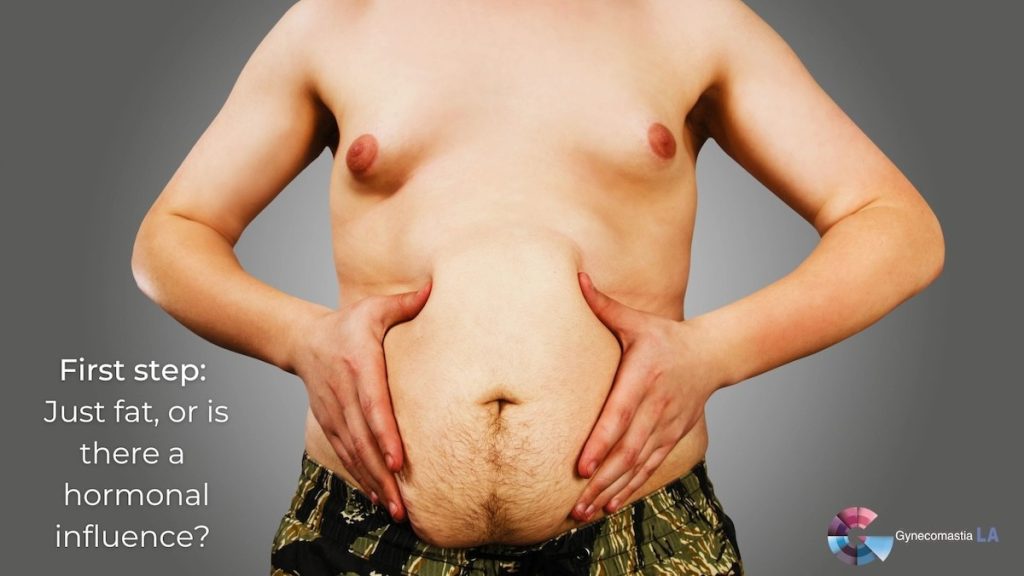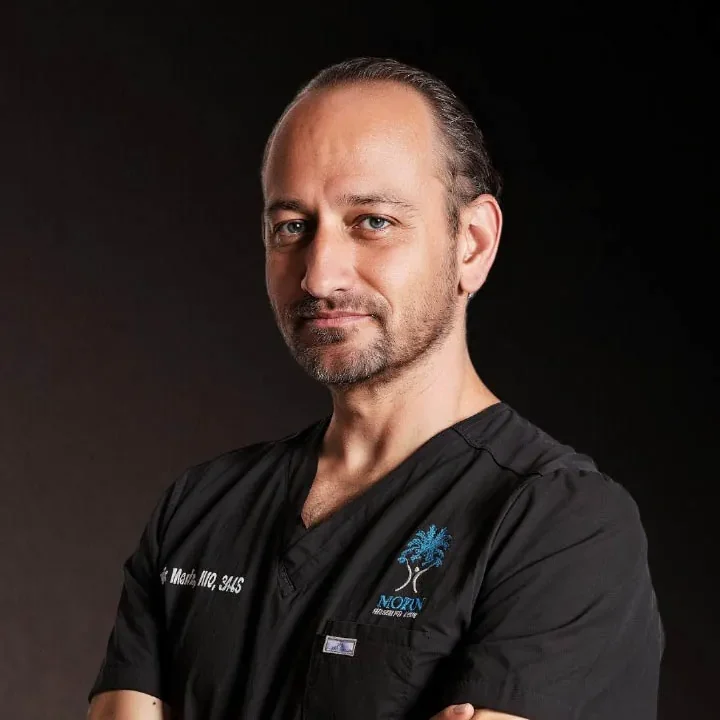Table of Contents
- Understanding Gynecomastia and Pseudogynecomastia
- Causes and Risk Factors for Gynecomastia and Pseudogynecomastia
- Diagnosing Gynecomastia and Pseudogynecomastia
- Treatment Options for Gynecomastia vs Pseudogynecomastia
- Lifestyle Changes and Prevention Strategies
- Seeking Medical Help and Consultation
- The Psychological Impact of Gynecomastia vs Pseudogynecomastia
- FAQs about Differentiating Gynecomastia From Pseudogynecomastia: the Importance of Diagnosis.
- Fina Thoughts: Gynecomastia vs Pseudogynecomastia
Male enlarged breasts are often linked to differentiating Gynecomastia vs Pseudogynecomastia, a crucial distinction for understanding breast enlargement. It’s like deciphering two closely related languages – similar in appearance but vastly different when you dive deeper into Gynecomastia vs Pseudogynecomastia.
Understanding Gynecomastia vs Pseudogynecomastia is essential for men experiencing breast enlargement. Knowing the differences can lead to better treatment options and a clearer understanding of one’s condition.
Picturing it as an iceberg beneath the water’s surface might help – what we see externally is only part of the story. There are layers beneath that need uncovering for accurate diagnosis and treatment. A man facing this challenge might feel embarrassed or even alarmed because he doesn’t know if his chest enlargement results from excess glandular tissue (gynecomastia) or fat accumulation (pseudogynecomastia).
Let’s stick together as we dive into the unknown, making sense of these conditions and offering practical tips you can use.
Table of Contents:
- Understanding Gynecomastia and Pseudogynecomastia
- Causes and Risk Factors for Gynecomastia and Pseudogynecomastia
- Diagnosing Gynecomastia and Pseudogynecomastia
- Treatment Options for Gynecomastia and Pseudogynecomastia
- Lifestyle Changes and Prevention Strategies
- Seeking Medical Help and Consultation
- The Psychological Impact of Gynecomastia and Pseudogynecomastia
- FAQs about Differentiating Gynecomastia From Pseudogynecomastia: the Importance of Diagnosis.
- Conclusion
Therefore, understanding the differences between Gynecomastia vs Pseudogynecomastia can influence not only treatment options but also mental health and self-esteem.
Understanding Gynecomastia and Pseudogynecomastia
Gynecomastia is characterized by excess glandular male breast tissue and fat, leading to enlarged breasts in men. On the other hand, pseudogynecomastia involves enlargement due to fat deposition alone. The main difference lies in the type of tissue causing chest enlargement.
In gynecomastia cases, hormonal fluctuations are often at play – especially imbalances between estrogen and testosterone levels. It’s not just about having ‘man boobs’; it can indicate underlying health issues like liver disease or tumors. Learn more about the different stages of gynecomastia here:
The Physical Manifestations of Gynecomastia and Pseudogynecomastia
Puffy nipples, tender breasts, or lumps beneath nipple areas could indicate a gynecomastia case – this abnormal growth usually affects both sides but may also occur unilaterally (one side only). But remember: if there’s no firm glandular tissue beneath your skin only soft fatty substance, it might be pseudogynecomastia instead.
It’s essential to differentiate between these two conditions as they require different treatment approaches. In essence, real gynecomastia needs medical intervention; fake one asks for lifestyle changes like dieting or weight lifting techniques designed specifically for chest muscle sculpturing.

Causes and Risk Factors for Gynecomastia Cases
While age-related hormonal shifts cause most genuine man boob disorders (gynecomastia), medications such as anti-androgens used to treat prostate problems, AIDS drugs, and anabolic steroids can also be culprits. Overindulgence in alcohol or street drugs like marijuana and heroin may also lead to this condition.
Conversely, pseudogynecomastia often associated with obesity is primarily caused by excessive fat accumulation rather than glandular proliferation. Hence, losing weight through healthy eating habits and regular exercise could significantly improve chest contour.
Causes and Risk Factors for Gynecomastia and Pseudogynecomastia
Gynecomastia and pseudogynecomastia are two conditions that can cause enlarged male breasts. But they have different causes, risk factors, and treatment options.
Hormonal Imbalances: A Culprit of Gynecomastia
A major cause of gynecomastia is a disruption in the balance between estrogen and testosterone. When levels of estrogen (female hormones) exceed those of testosterone (male hormones), it can lead to excess glandular tissue in the chest area, causing an abnormally large appearance. Street drugs like marijuana or steroids also contribute to these imbalances.
This condition isn’t limited by age either; teenagers experiencing puberty-related hormone fluctuations and older men dealing with a natural decline in testosterone production may grapple with this issue. There are also four grades of gynecomastia.
Pseudogynecomastia: More Fat than Hormones
On the other hand, pseudogynomastic individuals don’t deal with overactive glands but rather fat accumulation, leading to overly large breasts. Unlike true gynecomastia, where glandular tissue proliferates, excessive adipose deposits underlie enlarged breast contours #.
A primary cause of pseudogynomastic enlargement is obesity. Those carrying excess weight often store additional fatty tissue around their chest muscles, which could be mistaken for actual breast development due to its similar presentation.
Risk Factors Involved
Understanding the risk factors can help in preventing these conditions. Besides hormonal imbalances and drug use, other triggers for gynecomastia include certain medications or health issues like liver disease #.
In contrast, pseudogynomastic development is mainly linked to obesity and lack of exercise, leading to excess fat tissue build-up. Men tend to accumulate more body fat as they age, which could lead them towards this condition if weight gain isn’t controlled.
The Importance of Proper Diagnosis
Diagnosing Gynecomastia and Pseudogynecomastia
Accurately pinpointing gynecomastia and pseudogynecomastia necessitates an exhaustive evaluation to determine the most suitable treatment. Understanding the difference between these two conditions lies mainly in identifying whether it’s excess glandular male breast tissue or fat causing enlarged breasts.
In a typical gynecomastia case, swollen or puffy nipples are often observed, pointing towards a true gynecomastia condition. This situation indicates an increase in glandular male breast tissue rather than just fatty deposits, which characterizes pseudogynecomasita.
Pseudogyneacomasta, conversely, doesn’t involve any glandular tissue growth but is due to excess adipose accumulation beneath the chest area. When examining this condition, doctors look specifically for excessive fat without associated swelling around nipple areas.
Recognizing the symptoms of Gynecomastia vs Pseudogynecomastia is vital for early diagnosis and treatment.
Differentiating Factors In Diagnosis
Physical examination plays a vital role when differentiating between these two cases. Doctors check if firmness under your skin – usually indicating gynecomastia – is caused by increased hormone production, leading to abnormal enlargement of male breasts.
In contrast with that scenario, softer consistency would suggest you deal more with pesudogyneacomoesta as it implies only excessive fatty tissues are present without extra glands.
Importance Of Accurate Diagnosis
An accurate diagnosis isn’t merely about labeling one’s condition; it directly affects how best to effectively address and treat gynecomastia vs pseudogyneacomoesta. For instance, while surgical excision might be needed for genuine gynecomastia cases to remove excess glandular tissue, lifestyle modifications like weight lifting and diet changes could suffice for pseudogynecomastia treatment.
Recognizing the main difference between these conditions helps avoid unnecessary surgical interventions when they’re not needed. We advise consulting with knowledgeable medical professionals who are well-versed in this area so they can properly diagnose the issue through physical assessments and patient records. After all, proper care starts with correctly understanding what you’re dealing with.
Treatment Options for Gynecomastia vs Pseudogynecomastia
When treating gynecomastia and pseudogynecomastia, the approaches differ based on their root causes. Knowing whether you’re dealing with excess glandular tissue or fat accumulation in your chest area is vital.
Surgical Treatments for Gynecomastia
In cases of gynecomastia, where there is an overgrowth of glandular male breast tissue, surgical intervention becomes necessary. Plastic surgeons often employ male breast reduction surgery, which can effectively treat gynecomastia by removing this excess tissue.
This operation removes the overly large breasts and reshapes the chest contour. By doing so, they aim to restore a more traditionally masculine appearance to the patient’s torso. Additional surgical excision techniques might also be used in some severe instances involving abnormally large amounts of skin or excessive glandular growths.
Glandular male breast reductions are typically performed under general anesthesia and involve small incisions around the nipple or within natural creases on the chest wall for minimal scarring post-surgery.
Pseudogynecomasita Treatment: Lifestyle Changes and Exercise Regimes
The main difference between true gynecomastia case versus pseudogyneacomastica lies in its core cause- fatty tissues versus hormonal fluctuations causing enlarged male breasts, respectively. Pseudogynaecomasita, unlike gynecomastia, doesn’t involve an excess of glandular tissue but rather a build-up of fat in the chest area. So, it can often be managed through weight loss and exercise.
Guys often carry extra fat in their bellies and chests, so making healthier life choices can help you drop weight and lessen the look of bigger breasts. These changes could be tweaking your diet or using certain weight-lifting methods to focus on and strengthen your pecs. But keep in mind, if these non-surgical strategies don’t work for pseudogynecomastia

Lifestyle Changes and Prevention Strategies
Living with an enlarged chest can be challenging. But don’t lose hope. With the right lifestyle changes, you may see improvement in pseudogynecomastia.
The Power of Weight Loss
If you’re dealing with a true gynecomastia condition, weight loss might not help as much. However, shedding some pounds can make all the difference for a pseudogynecomasita case where excess fat is the culprit.
Combine a healthy diet with regular physical activity such as weight lifting and pectoral exercises for maximum results. Activities like weight lifting techniques and pectoral exercises could significantly improve your appearance by toning your chest muscles.
Dress to Impress…Yourself.
Compression vests aren’t just fashion accessories—they’re practical tools that give immediate results while working on long-term strategies. These vests help flatten the chest area, relieving discomfort or self-consciousness associated with overly large breasts.
Say No to Alcohol Consumption
We’ve all heard it before—too much alcohol isn’t good for our health—but did you know that excessive drinking contributes to male breast enlargement? Yes. It interferes with hormonal balances, which can lead to enlarged male breasts, so cutting back on alcohol consumption could do wonders for reducing both gynecomastia cases and instances of pseudogynecomastia.
Seeking Medical Help and Consultation
It’s important to note that gynecomastia can sometimes be a symptom of more serious health issues. If you’re experiencing tenderness in your nipples or changes in the size of your male breasts, consulting with a medical professional is a good idea. It is important to know that there are different grades of gynecomastia 1-4.
Getting an early diagnosis helps you get treatment faster and rules out any underlying conditions causing your enlarged breasts. By diagnosing the enlargement as either due to excess glandular tissue or fat accumulation, plastic surgeons can better understand the cause.
Gynecomastia patients often feel embarrassed about their condition and delay getting professional help. But remember, this condition isn’t something you caused—it could happen due to hormonal fluctuations or other factors beyond your control.
If anything seems off with your chest area—be it excess skin around the nipples or abnormally large breasts for your body type—you should reach out to an experienced plastic surgeon without hesitation. This will let them analyze what is happening beneath those pectoral muscles: Is there excessive glandular tissue? Or maybe too much fatty tissue?
- Hormonal imbalance: Gynecomastia cases are often related to shifts in hormone levels, mainly testosterone production falling behind estrogen, leading to excessively large male breast tissues.
- Fat deposition: In pseudogynecomastia cases, men tend to have more fat deposits than a true increase in breast glands, thus making weight loss a possible solution.
If losing weight through weight lifting techniques or pectoral exercises is recommended, follow the advice diligently. But don’t be alarmed if surgical excision techniques are suggested to remove excess glandular tissue and improve chest contour. The main goal of gynecomastia treatment is to restore a normal male breast shape and correct deformities of the breast, nipple, or areola.
The Psychological Impact of Gynecomastia vs Pseudogynecomastia
Gynecomastia vs pseudogynecomastia, while physically different, can have significant psychological impacts on men. These conditions can lead to feelings of embarrassment due to enlarged male breasts, causing emotional distress that extends beyond the physical discomfort.
Men with gynecomastia may experience a decline in self-esteem because their chest contour does not align with societal norms for masculinity. This issue is even more prominent among weight lifters who cannot achieve the desired pectoral definition despite rigorous lifting techniques. Hormonal fluctuations triggering gynecomastia might leave them feeling powerless over their bodies.
Pseudogynecomastia patients often struggle similarly but face additional challenges related to obesity stigma. The excess fat accumulation in the chest area might make them overly conscious about their body image, leading some to seek medical help or pursue pseudogynecomasita surgery options aggressively.
Coping Mechanisms and Support Systems
To manage these mental health implications effectively, seeking professional support becomes essential. It’s important not just for surgical interventions like removing excess glandular tissue or improving chest contour.
Besides this external assistance, adopting healthier lifestyle habits, such as maintaining a balanced diet or incorporating suitable exercise routines, can be beneficial, too. They don’t just help lose weight by reducing pseudogynecomasita symptoms; they promote overall well-being too.
Acknowledging Emotional Challenges: First Step Towards Healing
Realizing these emotional reactions are normal and nothing to be embarrassed about is essential. Recognizing these reactions is the key to beginning the healing process.
Dealing with gynecomastia from hormonal imbalance or pseudogynecomasita due to extra fat can be tough. But remember, you’re not alone.
FAQs about Differentiating Gynecomastia From Pseudogynecomastia: the Importance of Diagnosis.
How to distinguish between gynecomastia vs pseudogynecomastia?
Gynecomastia involves excess glandular breast tissue, whereas pseudogynecomastia is fat deposition. The feel of the chest area can give clues – firmer in gynecomastia and softer in pseudogynecomastia.
What is the diagnostic criteria for gynecomastia?
The diagnosis of gynecomastia hinges on physical examination – swollen or puffy nipples along with enlarged male breasts due to excessive glandular tissue growth.
How can you tell the difference between Gynecomastia conditions?
Differences are evident from their causes and treatment: hormonal imbalances cause true Gynecomastia needing surgery; obesity-related Pseudogynecomasita improves with lifestyle changes like dieting and exercise.
What is the differential diagnosis of gynecomastia in men?
In diagnosing Gynaecomsitca, it’s important to rule out tumors or liver disease that could lead to hormone imbalance, causing breast enlargement. Also, consider medications that might induce similar symptoms.
Fina Thoughts: Gynecomastia vs Pseudogynecomastia
- Distinguishing gynecomastia from pseudogynecomastia is critical, as it influences diagnosis and treatment.
- Remember, gynecomastia involves excess glandular tissue, while pseudogynecomastia stems from fat accumulation.
- Hormonal imbalances can spark off gynecomastia; obesity often leads to pseudogynecomastia. Both conditions share physical characteristics yet demand different treatments.
- Surgery might be necessary for severe cases of gynecomastia, whereas lifestyle changes can greatly help manage pseudogynecomastia. Seek medical advice when symptoms arise because early detection promotes better health outcomes.
In essence, comprehending these conditions goes beyond aesthetics – it’s about understanding your body and seeking the right help at the right time. Dr. Babak Moein is an expert on gynecomastia vs pseudogynecomastia. You can schedule a no-obligation consultation with him at his Los Angeles office or virtually online. Contact our appointment coordinators by phone or fill out the contact form, and we will be in touch.

Dr.Babak Moeinolmolki
LA Cosmetic Surgeon Dr. Moein is board-certified by the American Board of General Surgery.

